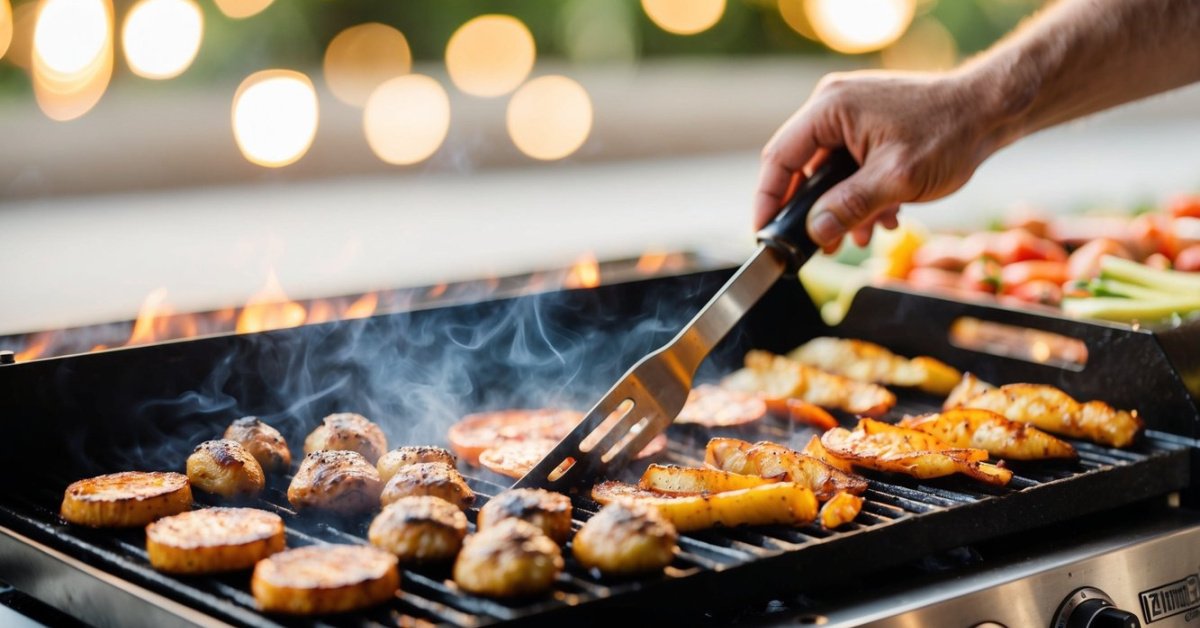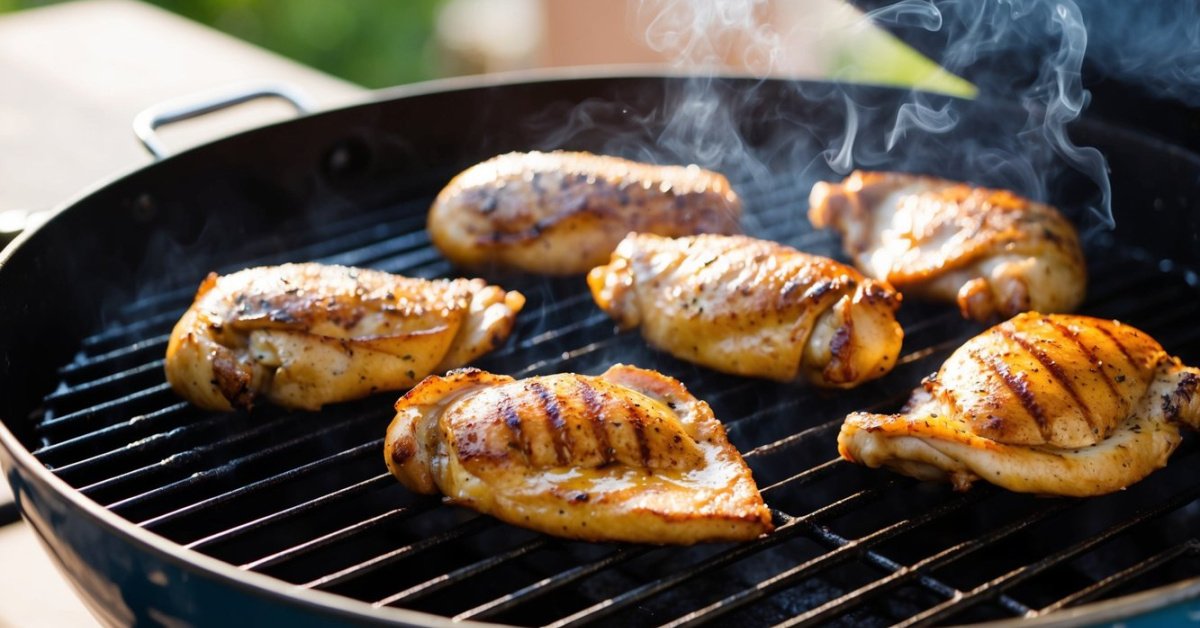Become a Pellet Grill Master: A Beginner’s Guide to Cooking Like a Pro
Welcome, fellow grillers! If you’re a newbie to the world of pellet grills, don’t fret. With this guide, we’ll walk you through the basics so that you can cook like a pro in no time. From understanding the components of a pellet grill to temperature control and cooking techniques for various types of food, we’ve got you covered. We’ll even offer up some tips for maintaining and cleaning your pellet grill. So grab a cold one and let’s get started! Continue reading to become the ultimate pellet grill master.

Understanding the basics of a pellet grill
If you’re new to grilling and barbecues, understanding the basics of a pellet grill can be overwhelming. But fear not, my novice grilling enthusiast friends! Let me break it down for you.
A pellet grill is essentially an outdoor cooker that uses wood pellets as its heat source. These pellets are made from compressed sawdust and come in various flavors like hickory, mesquite, or applewood. The pellets are loaded into a hopper on one side of the grill and then fed into a burn pot by an auger system.
The temperature on a pellet grill is controlled by adjusting the rate at which these wood pellets are fed into the firepot. This means that unlike traditional charcoal or gas grills where temperature control can be tricky to master, with a pellet grill you simply set your desired temperature and let it do its thing!
But what really sets apart using a pellet grill from other cooking methods is their versatility. You can smoke low-and-slow for hours without needing constant attention or adjust settings to sear steaks hot-and-fast over direct heat.
So if you’re looking to up your outdoor cooking game this summer but don’t want to spend all day manning the flames – consider investing in this amazing piece of equipment!
Setting up your pellet grill for the first time
Setting up your pellet grill for the first time can be a daunting task, especially if you’re new to the world of grilling and barbecues. But fear not, with some simple steps and guidance from this expert griller next door, you’ll be cooking up mouth-watering meals in no time.
First things first, make sure your pellet grill is properly assembled according to the manufacturer’s instructions. Once that’s taken care of, it’s important to season your grill before use. This involves coating the inside of the cooking chamber with oil and heating it for about 30 minutes at high temperature.
When it comes to using pellets in your grill, make sure they are made from high-quality wood such as mesquite or hickory. Fill up the hopper with pellets and turn on the power switch. Set your desired temperature using either manual controls or an app on a smartphone connected via WiFi.
One thing that sets pellet grills apart from traditional charcoal or gas grills is their ability to maintain consistent temperatures throughout cooking thanks to their automatic feed systems. This makes them perfect for slow-cooking meats like brisket or ribs.
Finally, don’t forget about safety measures when using any type of outdoor cooking equipment! Keep a fire extinguisher nearby just in case something goes wrong during setup or while cooking.
With these tips under your belt (or apron), you’ll be well-equipped to set up and use your new pellet grill like a pro!
How do you choose the right pellets for your grilling needs?
Choosing the right pellets for your grilling needs can make all the difference in achieving that perfect smoky flavor. As a seasoned griller, I’ve tried my fair share of pellet varieties and have developed some tips to help newcomers choose the best option for their next BBQ.
Firstly, consider what type of meat you’ll be cooking. Different meats pair better with certain wood flavors. For example, hickory or mesquite pellets are great options for beef and pork while apple or cherry wood adds a sweet touch to poultry and fish.
Secondly, think about your personal preference when it comes to intensity of smoke flavor. If you prefer a strong smoky taste, opt for oak or mesquite pellets whereas those who enjoy milder flavors may prefer fruitwood blends like apple or peach.
Lastly, check the quality of the pellets before purchasing them. Look out for any signs of moisture as damp pellets can cause inconsistent burning which affects both flavor and temperature control during cooking.
By following these simple guidelines when choosing your grill’s fuel source; you’ll be well on your way to impressing friends and family with perfectly cooked meats every time!
Temperature control and cooking techniques for various types of foods
When it comes to grilling and barbecuing, temperature control is key. Different types of food require different cooking techniques and temperatures to achieve optimal flavor and texture.
For example, when cooking a steak on a pellet grill, it’s important to first preheat the grill to 450 degrees Fahrenheit. This high heat will sear the outside of the steak, locking in juices for a juicy and flavorful result.

« how much clearance does a grill need
where to probe a brisket »
However, when it comes to smoking ribs or brisket on a pellet grill, lower temperatures are necessary for longer periods of time. For these meats, aim for a temperature range between 225-250 degrees Fahrenheit. This slow-cooking method allows the smoke from wood pellets to infuse into the meat for added depth of flavor.
When grilling vegetables on your pellet grill, use indirect heat by setting one side of your grill at high heat and leaving the other side off or at low heat. This will prevent burning while still allowing veggies like corn or peppers to cook through evenly.
Overall, mastering temperature control is essential for achieving delicious results with any type of food on your pellet grill. With practice and patience (and maybe some trial-and-error), even those new-to-grilling can become experts in no time!
Tips for Maintaining and Cleaning Your Pellet Grill
Maintaining and cleaning your pellet grill is crucial to ensure that it functions properly and produces delicious food every time. As someone who takes pride in grilling, I’ve learned a few tips over the years that I want to share with those who are new to this hobby.
Firstly, always empty the ash pan after each use. This will prevent any buildup of ash which can affect temperature control, airflow and therefore overall cooking performance. It’s also important not to let grease accumulate as this can potentially lead to flare-ups and damage your grill.
Another tip is regularly checking for any signs of wear or tear on the grill parts such as gaskets or seals. If you notice anything damaged, it’s best replaced immediately before further damage occurs.
When cleaning your pellet grill make sure you do so when it has completely cooled down; using water on hot surfaces could cause warping or cracking of certain components like the drip tray.
A deep clean should be done at least once every season by taking apart different components like racks, trays etc., cleaning them individually then reassembling everything back together again in perfect condition!
Finally – invest in a good cover! Not only does this protect from weather elements but also from pests/animals getting into your pellets while they’re stored away waiting for their next cookout adventure!
By following these simple tips anyone can keep their pellet grill running smoothly all season long – trust me there’s nothing better than enjoying perfectly cooked BBQ meats without worrying about maintenance issues!

Conclusion
Now that you know the basics of how to use a pellet grill, it’s time to take your grilling skills up a notch and start cooking like an expert! With temperature control, selecting the right pellets for whatever you’re making, and following some basic maintenance tips for keeping your pellet grill in perfect condition – there’s no limit to what amazing meals you can create. So why not give it a go today?














